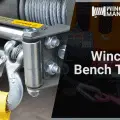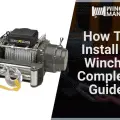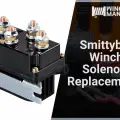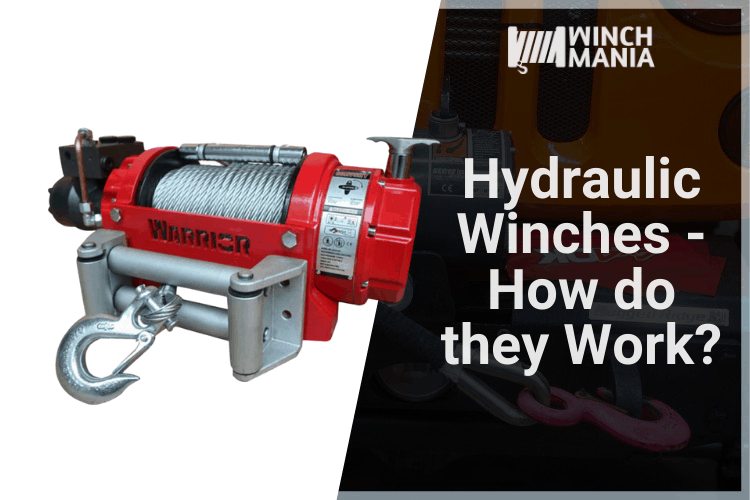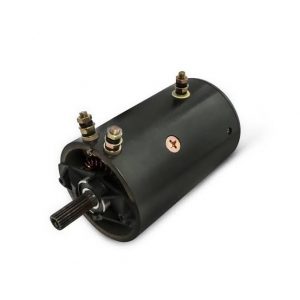
The winch motor is one of the most important parts of a non-manual winch, functionality wise. Without it, the winch will not work, it will not even be of any use except for spare parts. Without a good, working motor, a winch is just a piece of junk.
To make sure that your winch motor is in its peak performance, or at least not broken, here are a few ways to test its functionality.
At a Glance
Safety First
Before we dive into the various tests you can do for your winch motor, please make sure that you are well aware and are adherent to the necessary safety measures.
Do not meddle with electricity if you do not understand how it works. Make sure that you have a working understanding of how electricity works and how electrical components work. Eliminate any risks of hurting yourself by making sure that you know what you are dealing with. Don’t be ignorant of what can harm you or others.
Wear gloves. This is the most basic precautionary measure you can take. Make sure that your gloves are strong and of good quality.
Avoid fire hazards. Make sure that there are no flammable materials nearby. Sparks from electric components of the winch may ignite these materials. Have a fire extinguisher nearby.
Check your equipment. Ensure that all of your equipment is not damaged and are of the highest quality. Damaged equipment may cause unnecessary hurt.
Jumper Cable Test
This is sort of hot wiring the winch to see if the motor works. It is a very simple procedure that requires only the most basic understanding of how machines and electricity work. Follow these steps to perform the jumper cable test.
- Disconnect the wires of the winch from the vehicle.
- Prepare a vehicle battery. Either the battery of your vehicle or a spare battery will do.
- Use jumper cables to connect the battery to the winch. Although polarity does not really matter here, the red cable is commonly used on the positive terminal and the black cable is used on the negative terminal of the battery.
- Connect the other end of the black cable to any of the terminals of the winch.
- Using the positive red cable, softly tap the other terminal of the winch. This should manifest an electrical response from the winch. If the winch drum moves, it means that your motor works. If not, you can stop this experiment. There may be a problem in the electrical components of the winch or the motor is broken.
- If the winch drum moves when you tap the positive cable on the terminal, you can connect it to the terminal. The winch drum should now turn in one direction.
- Try reversing the connections. The winch drum should rotate to the opposite direction now.
Possible Problems if the Motor Does Not Work
Here is the list of possible problems with your winch if the motor does not work.
- A blown fuse
This is more of an electrical problem. There is a chance that your winch has drawn too much power. This will blow a fuse and disrupt the circuit connection. You can easily fix the problem by replacing the fuse.
- A short circuit
There may be damaged wires within the winch that causes a short in the circuitry. It may be that the damage is in the switch. Check all of the cables to make sure that there is no exposed wire.
- Damaged brushes
If there was a spark when you tap the positive cable on the winch terminal, then that means that there are no problems with the electrical connection. But if the winch drum still didn’t move, then there may be a problem with the motor brushes. You can fix this problem by replacing the brushes. Just open the motor housing and replace the broken parts.
Voltage Drop Test
The voltage drop test gives you the assurance that the problem is only on the electrical components within the winch, and not on the motor itself.
- Use a multimeter set in VDC.
- Connect one of the probes to the grounding of the winch.
- Connect the other probe to either the blue or the yellow cable of the winch. Polarity does not really matter here.
- Activate both the multimeter and the winch. The reading on the multimeter should go near the running voltage of the winch. If not, the problem with your winch is in the electrical components.
One easy fix for this problem is cleaning your motor properly. Although winches are manufactured to be quite sturdy, small particles like dust can penetrate their housing. These particles can get into the wiring and disrupt the flow of electricity.
- Disconnect the motor from the battery.
- Use a toothbrush and a spray of god brake cleaning liquid to clean the motor.
- Also clean the housing for better results.
- Wait for the motor to dry before assembling it back together.
- Perform the voltage drop test or jumper cable test again to see if cleaning made a difference.
If cleaning your motor did not yield any positive results, you may have broken parts in the motor. You may need to either replace broken parts, do a complete motor rebuild, or get a whole new motor replacement. If a motor rebuild is what you need, it is better to have a professional do it for you.
Motor Goes Only One Way
If your motor goes only one way, there are a few possible causes.
- Bad wiring
Most of the time, the problem with a winch is only because of bad wiring. Before you go buying expensive parts, make sure that you have no faulty wiring. Most of the time, bad wiring happens in the switch to the contactor part of the winch. But check the entire winch to be absolutely certain.
- Faulty switch
You may have a faulty switch if your motor only turns one way. You can try fixing the electrical components of the switch. Or you can just replace the whole thing altogether.
- Solenoid troubles
A set of solenoids is required to make the winch drum rotate in one direction and another set to make it turn the other direction. Check your solenoids, they may be rusty, broken or stuck. If the solenoids are your problem, you try fixing them. But most of the time, fixing them only gives temporary assurance that they will work. You would have to replace the contactor for a more permanent solution.
- Dirty motor
An unmaintained motor may be another cause of why the motor goes only one way. Follow the instructions above to remedy this problem.
The Winch is Very Slow
If your winch works, but the motor moves very slowly, you may be having any of these problems.
- Motor does not receive enough power
If the motor is not receiving sufficient power, it will not perform in its peak strength and speed. The problem can either be in the battery, wiring, or the solenoids. If it is in the solenoids, follow the instructions discussed above.
Make sure that your battery has enough juice and is not damaged. Also make sure that all connections, terminals and cables are in good condition.
- Greasing problems
The winch may be slow because the wrong kind of grease is applied on the mechanical parts. If the grease is too thick, or if it is old and small particles mixed with it, the gears may be experiencing resistance.
If this is your problem, clean your winch and apply the right kind and the right amount of grease.
Maintain Your Winch Motor
The best way to make sure your winch motor works splendidly is to not let down in its maintenance. But even with the best maintenance, it may still display some signs of damage over time. These tests will help you determine what the problem is in a malfunctioning winch motor and what the appropriate course of action is.
What do you think of this guide? Is there something that we have missed? How do you test your winch motor? Let us know in the comments section.
We have a lot of helpful guides on this site, all of them about winches. Here are a few you might find useful.
